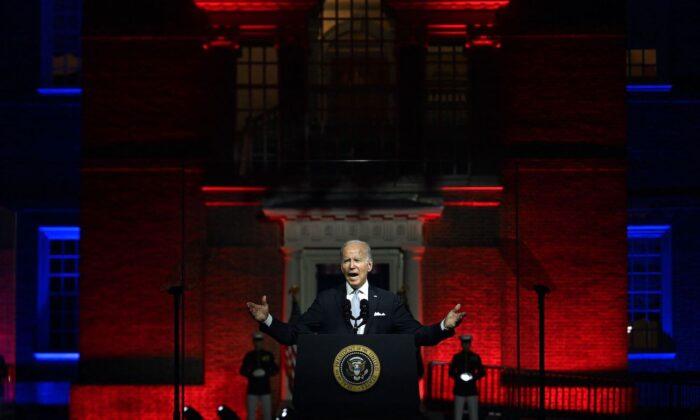How divided are we?
A Conflict of Visions
All this lends urgency to the quest to understand the fundamental divide that separates us, which extends even beyond jurisprudence and due process.If we know a person’s views on one of these issues, we can usually predict his views on the others. He names these pre-cognitive ways of organizing how we look at the world as the “constrained” and “unconstrained” visions.
The constrained vision recognizes the limits of any one person’s wisdom, experience, and expertise, as well as the intractability of human nature in the face of attempts to “improve” it. It sees knowledge as the social experience of the many, not the expertise of the intellectuals. So, it’s skeptical of grand schemes to improve the world. It focuses on unintended consequences and trade-offs, as opposed to solutions.
Sowell uses the contrast between the American and French Revolutions of the late 18th century to illustrate the difference.
The American founders, with their constrained vision, drew on biblical wisdom about Nature and Nature’s God, about the pride and sinfulness of humanity, and the need to avoid concentration of power into too few hands. Hence, the need to have a system of checks and balances, and division of governmental branches and levels, each constraining and constrained by the others.
They learned from English experience about the need for the rule of law and to hold rulers accountable to it. They studied previous republican constitutions, such as those of Greece and Rome.
The constrained vision is naturally democratic, as Sowell describes it, relying on the decisions of the many over time, rather than the brilliance of the elite. It sees utopian schemes as intrinsically authoritarian or totalitarian, in that they arise from the brains of individuals or an elite or vanguard, who then impose their plan on the ignorant and passive, if not “deplorable,” many, regardless of their own opinion.
The unconstrained vision, as illustrated by the French Revolution, sees the possibilities as unlimited by history, tradition, custom, the wisdom of generations, or human nature. Knowledge in the unconstrained view arises from the rational excogitation of elites or geniuses rather than as the social experience of the many. This view discounts the wisdom of experience and of generations and looks to grand schemes of economic and political control, central planning, architectural iconoclasm, and urban planning.
Unscrupulous Optimism
The English philosopher Sir Roger Scruton takes a somewhat similar view of the problem of the unconstrained vision, with its attendant overvaluing of intellectuals, experts, and central government or transnational control (as in the European Union).His concern is also with the dangers of false hope (his book’s subtitle) and the particular fallacies that make such “unscrupulous optimism”—as opposed to scrupulous and constrained optimism—so powerful and impervious to reason.
The fallacies he considers include the Best-Case Fallacy (i.e., the failure to consider scrupulously worst-case scenarios); the Planning Fallacy; the Utopian Fallacy (the immunity to refutation and the authorization of violence needed to confiscate property, enforce equality, and to defeat the alien forces and conspiracies blamed for the inevitable non-arrival of the desired condition); Zero-Sum Fallacy (I fail because you succeed); Moving Spirit Fallacy (i.e., as in, history is on our side); and the Aggregation Fallacy (treating freedom and equality as able to be added to each other, rather than as contradictory or trade-offs).
Scruton shows by reference not only to such champions of concentrated state power as Robespierre, Hitler, Stalin, and Mao, but also to modern architecture, with its grand schemes of architectural auteurs or “geniuses” like Le Corbusier, and also the EU. He shows the destructive force of these fallacies and the utopian energy they generate.
The EU, Scruton argues, has ridden roughshod over national cultures and traditions, overriding the democratic decision-making of its member nation-states, and imposing through its unelected bureaucrats hundreds of thousands of regulations at an ever-accelerating pace.
As the Democrats move further and further in a socialist direction, their unscrupulous optimism and unconstrained utopian vision, their intolerance of divergent views, impatience with democratic norms and processes, and their willingness to condone and even encourage mob violence, come to the fore.





